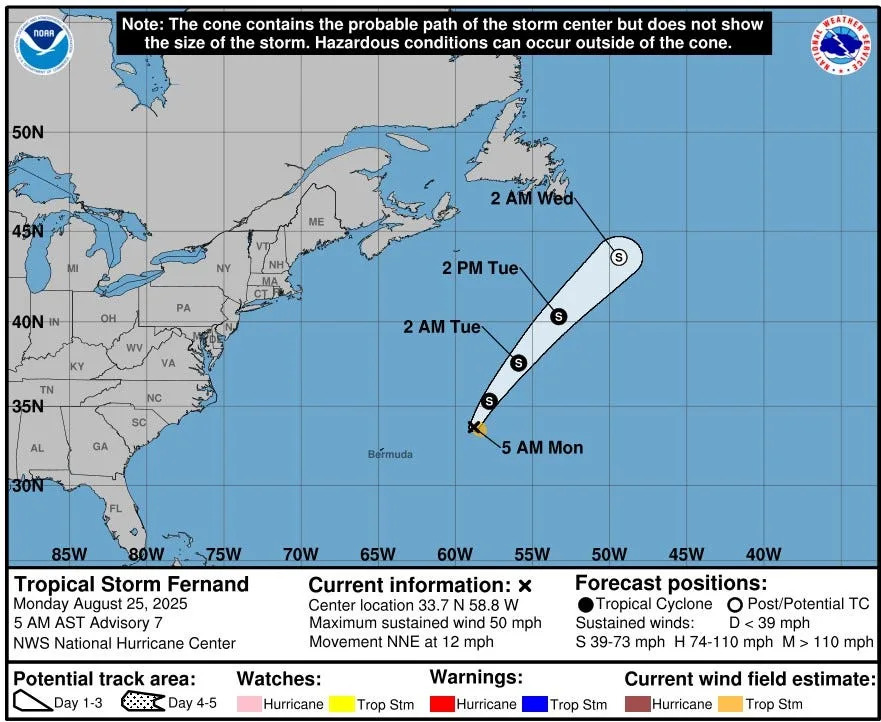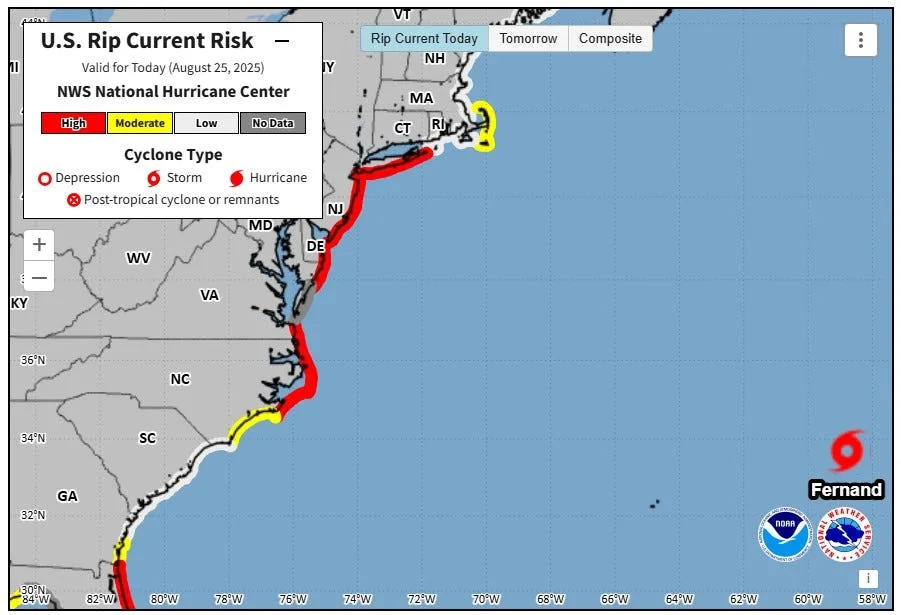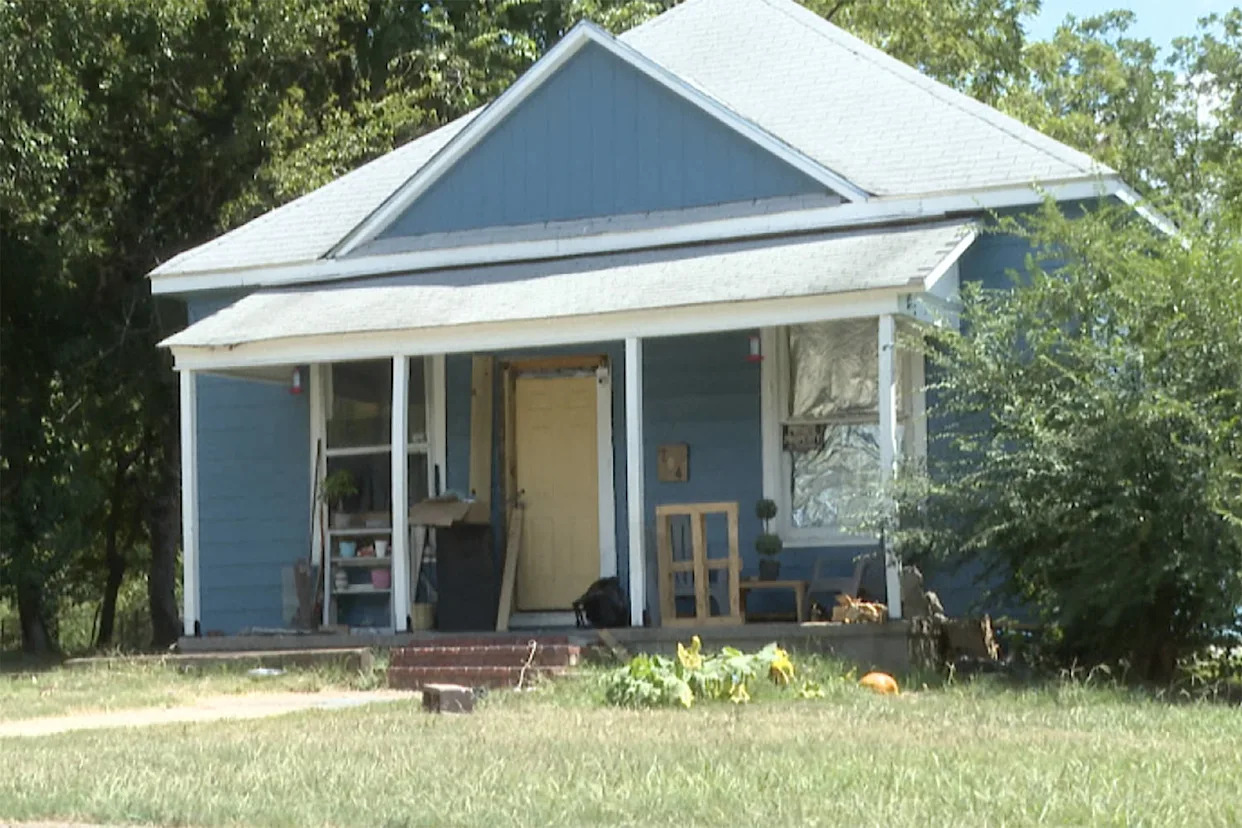Tropical Storm Fernand is churning up rip currents for Delaware beachg goers, but the end is near.
Less than a week after Hurricane Erin closed Delaware beaches, rip currents continue to cause problems after a Fernand developed Aug. 23. However, the rip current risk will drop Aug. 26.
Here's what you need to know about the latest storm.
Where is Tropical Storm Fernand?

Tropical Storm Fernand, which formed Aug. 24, is 360 miles east northeast of Bermuda. It should Fernand should move across the open waters of the subtropical central Atlantic well east and northeast of Bermuda. The storm's maximum sustained winds are near 50 mph with tropical storm force winds extending outward 60 miles.
Will Tropical Storm Fernand make landfall?
Fernand will not make landfall in the United States.
Will Tropical Storm Fernand impact Delaware?

While the storm will not make landfall, it will impact Delaware with heavy rip currents.
Delaware's Atlantic coast is under high rip current risk Aug. 25. The risk level drops to moderate risk on Aug. 26.
What is a rip current?
According to NOAA, rip currents are channeled currents of water that flow away from the shore out past the line of breaking waves. They form from water piling up between the breaking waves and the beach. As the water returns from the shore, it forms a narrow stream of breaking waves. They form from water piling up between the breaking waves and the beach. As the water returns from the shore, it forms a narrow stream of water that moves quickly out to sea.
What to do in a rip current
According to the United States Lifesaving Association, swimmers should do the following:
Relax, rip currents don't pull you under.
Don’t swim against the current.
You may be able to escape by swimming out of the current in a direction following the shoreline, or toward breaking waves, then at an angle toward the beach.
You may be able to escape by floating or treading water if the current circulates back toward shore.
If you feel you will be unable to reach shore, draw attention to yourself. If you need help, yell and wave for assistance.
How do hurricanes form?
Hurricanes are born in the tropics, above warm water. Clusters of thunderstorms can develop over the ocean when water temperatures exceed 80 degrees Fahrenheit. If conditions are right, the clusters swirl into a storm known as a tropical wave or tropical depression.
A tropical depression becomes a named tropical storm once its sustained wind speeds reach 39 miles per hour. When its winds reach 74 mph, the storm officially becomes a hurricane.
When does hurricane season end?
Hurricane season runs from June 1 through Nov. 30. However, hurricanes can occur before and after those dates.
What are the categories for tropical cyclones and hurricanes?
Tropical storm
A tropical storm is a tropical cyclone with winds between 39 and 73 mph. These storms bring heavy rains that could lead to dangerous flooding.
Category 1
A category 1 storm is the weakest of the hurricanes with winds between 74 and 95 mph. The storm will cause some flooding, but no real structural damage.
Category 2
A category 2 storm has winds between 96 and 110 mph. The storm can cause moderate damage to buildings.
Category 3
A category 3 storm will have winds from 111-129 mph. It can cause major damage to well-built framed homes, uproot trees and cause power and communication outages.
Category 4
A category 4 storm can cause catastrophic damage to well-built framed homes, tearing off roofs and breaking exterior walls. Mobile homes are destroyed. Roads are impassible and there are communication and power outages.
Category 5
A category 5 storm can cause catastrophic damage with most framed homes and mobile homes being destroyed. Trees will be snapped and uprooted. Roads will be impassible and there will be extended power and communication outages.
What is the forecast for hurricane season 2025?
National Oceanic and Atmospheric Administration
Named storms: 13 to 19
Hurricanes: 6-10
Major hurricanes: 3 to 5
Colorado State forecasters
Experts at Colorado State University are forecasting:
Named storms: 17
Hurricanes: 9
AccuWeather forecast
Forecasters at AccuWeather.com are predicting:
Direct impact on the United States: 3 to 6
Named storms: 13 to 18
Hurricanes: 7 to 10
Major hurricanes: 3 to 5
Here is the list of names for the 2025 Atlantic hurricane season
The names are given out in alphabetical order, and each new storm gets the next name on the list. There are no Q, U, X, Y, or Z names because of the lack of names that begin with those letters. So far this season, Andrea through Dexter have been used on tropical storms.
Here's how to pronounce all of the 2025 hurricane names.
AndreaBarryChantalDexterErinFernand
Gabrielle
Humberto
Imelda
Jerry
Karen
Lorenzo
Melissa
Nestor
Olga
Pablo
Rebekah
Sebastien
Tanya
Van
Wendy
Prepare now for hurricanes
Delaying potentially life-saving preparations could mean waiting until it’s too late. "Get your disaster supplies while the shelves are still stocked, and get that insurance checkup early, as flood insurance requires a 30-day waiting period," the National Oceanic and Atmospheric Administration recommends.
Develop an evacuation plan: If you are at risk from hurricanes, you need an evacuation plan. Now is the time to begin planning where you would go and how you would get there.
Assemble disaster supplies: Whether you’re evacuating or sheltering-in-place, you’re going to need supplies not just to get through the storm but for the potentially lengthy aftermath, NOAA said.
Get an insurance checkup and document your possessions: Contact your insurance company or agent now and ask for an insurance check-up to make sure you have enough insurance to repair or even replace your home and/or belongings. Remember, home and renters insurance doesn’t cover flooding, so you’ll need a separate policy for it. Flood insurance is available through your company, agent, or the National Flood Insurance Program. Act now, as flood insurance requires a 30-day waiting period.
Create a family communication plan: NOAA said to take the time now to write down your hurricane plan, and share it with your family. Determine family meeting places, and make sure to include an out-of-town location in case of evacuation.
Strengthen your home: Now is the time to improve your home’s ability to withstand hurricane impacts. Trim trees; install storm shutters, accordion shutters, and/or impact glass; seal outside wall openings.
Doyle Rice contributed to this story
This article originally appeared on Delaware News Journal: How long will Tropical Storm Fernand impact Delaware? Latest forecast








Comments